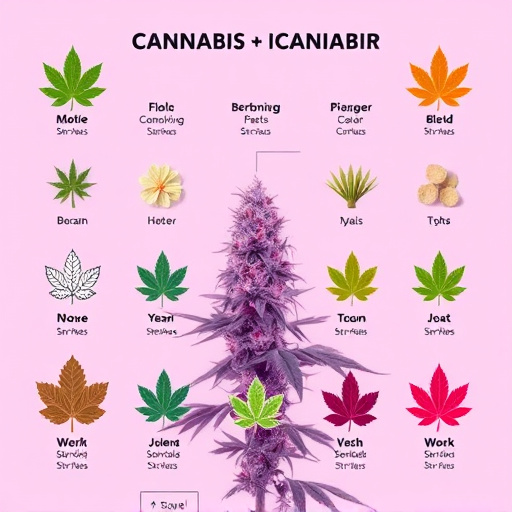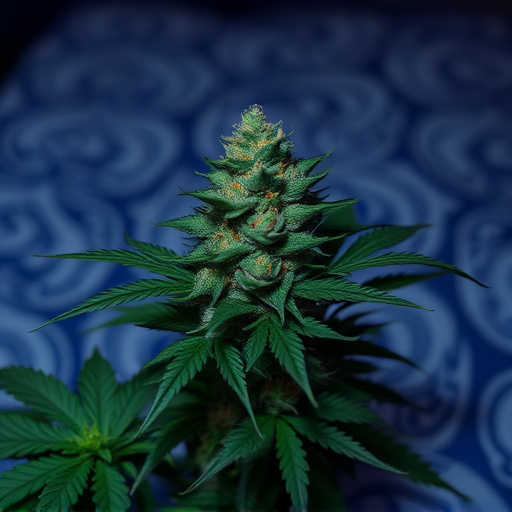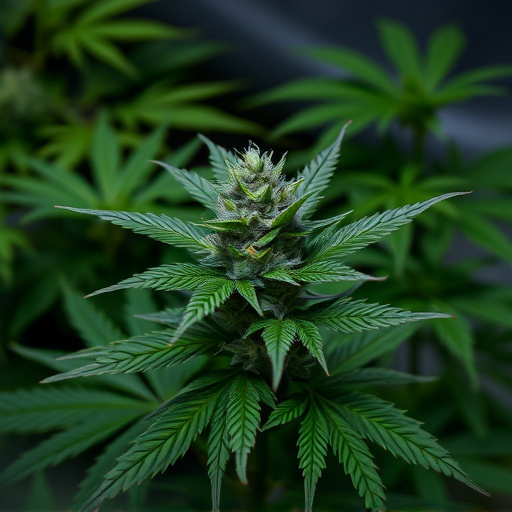Metabolism significantly impacts how quickly cannabis is processed and detected in an individual's system, with factors like age, weight, gender, health status, genetic variations in metabolizing enzymes (CYP2C9 & CYP3A4), and body composition affecting detection times. For individuals using cannabis strains for insomnia, these factors are crucial considerations when selecting strains high in CBD and low in THC to achieve prolonged relief without raising positive drug test results. Proper hydration also plays a role in speeding up metabolism and elimination of cannabinoids.
“Unraveling the intricate factors that influence cannabis detection times is essential in understanding its impact on various aspects, particularly in the context of treating sleep disorders. This article delves into the multifaceted dynamics behind these timings, considering individual metabolism and genetic predispositions, such as CYP2C9 and CYP3A4 enzyme variations, along with body composition and age-gender differences.
Additionally, we explore how cannabis strain characteristics, including THC/CBD content and terpenes, play a role in detection times, especially when targeting insomnia with Indica or Sativa strains. The analysis also extends to external factors like consumption methods, food interactions, and the evolution of testing techniques.”
- Metabolism and Individual Factors
- – Genetic variations in metabolizing enzymes (e.g., CYP2C9, CYP3A4)
- – Body mass index (BMI) and overall body composition
Metabolism and Individual Factors

Every individual’s metabolism plays a significant role in determining how quickly cannabis is metabolized and cleared from their system, which can impact detection times. This varies based on factors like age, weight, gender, and overall health. For instance, younger individuals tend to metabolize cannabis faster than older adults. Additionally, people with higher body mass index (BMI) may experience longer detection windows as fat cells slow down the metabolism of THC, the primary psychoactive compound in cannabis.
When considering cannabis strains for insomnia, these individual factors come into play. Certain strains known for their high CBD content and low THC levels might have prolonged detection times due to reduced metabolism, making them suitable choices for users who need relief without raising concerns about positive drug tests.
– Genetic variations in metabolizing enzymes (e.g., CYP2C9, CYP3A4)

Genetic variations in metabolizing enzymes play a significant role in determining how quickly cannabis is cleared from an individual’s system, which can impact detection times, especially for those using cannabis strains for insomnia or other medical purposes. Enzymes like CYP2C9 and CYP3A4 are key players in the metabolism of cannabinoids, such as THC and CBD. Variations in these enzymes’ activity levels due to genetic factors can lead to interindividual differences in drug clearance rates. For instance, individuals with a slow-acting CYP2C9 enzyme might have longer periods of detectability for cannabis compounds, while those with higher CYP3A4 activity could metabolize cannabinoids more rapidly, resulting in shorter detection windows.
Understanding these genetic variations is crucial when considering the effects on post-use detection times. It explains why some individuals may test positive for cannabis use weeks after consumption, while others are undetectable within a few days. This knowledge has implications for legal and medical contexts, particularly regarding drug testing policies and personalized medication recommendations for conditions like insomnia where specific cannabis strains are employed as treatments.
– Body mass index (BMI) and overall body composition

The detection time of cannabis in an individual’s system can vary significantly, and several factors come into play when determining how long it remains detectable. One such factor is body mass index (BMI). People with higher BMI levels may have a longer window for cannabis detection due to the increased fat content in their bodies. Fat cells are known to store cannabinoids like THC for an extended period, leading to a more prolonged presence of the drug in the system. This is particularly relevant when considering individuals who consume cannabis strains for insomnia or other medical purposes, as the desired effects may take longer to dissipate in those with higher BMI.
Additionally, overall body composition plays a crucial role. Muscle mass and hydration levels can influence how quickly cannabis is metabolized and eliminated. Well-hydrated individuals tend to flush out cannabinoids faster due to efficient kidney function. On the other hand, those with lower body water content may experience longer detection times. This highlights the importance of maintaining proper hydration when using cannabis products, especially for conditions like insomnia where a timely dissipation of effects could be beneficial.
Cannabis detection times are influenced by a multitude of factors, including individual metabolic variations in enzymes like CYP2C9 and CYP3A4, as well as overall body composition measured through body mass index (BMI). These factors play a significant role in how quickly cannabis is metabolized and cleared from the system. When considering the use of cannabis for conditions like insomnia, understanding these variables can help individuals make informed decisions about strain selection, ensuring optimal efficacy and minimizing detection periods.














